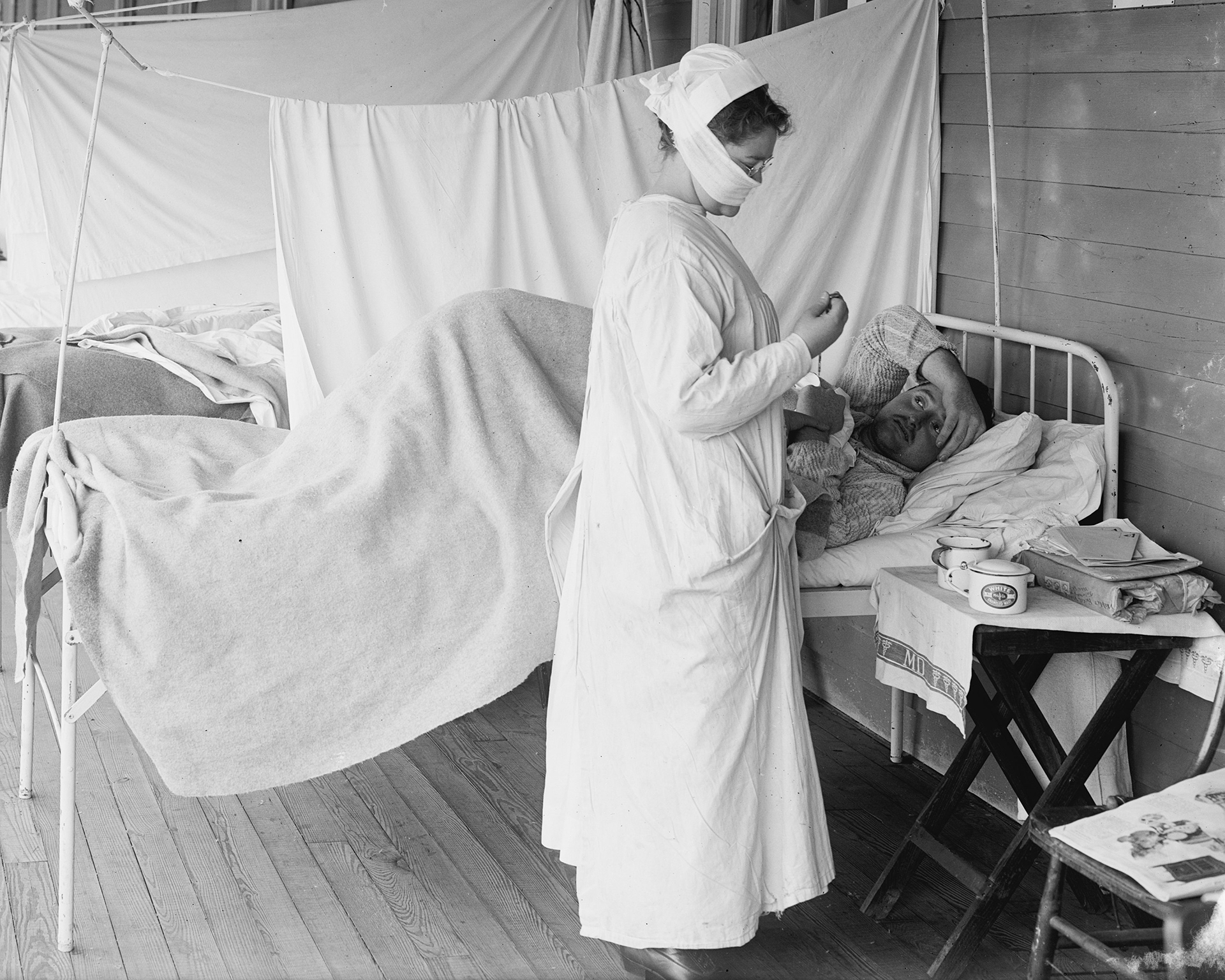The Deadly Third Wave Of The 1918-19 Pandemic

This is part seven of an ongoing series on the H1N1 Influenza A virus that killed 675,000 Americans between 1918 and 1919. We are telling the story, as much as possible, through the words of reporters of the time, particularly from The New York Times, which are available to the paper’s online subscribers.
I’ve got the blues, I’ve got the blues
I’ve got the alcoholic blues
No more beer, my heart to cheer
Goodbye whiskey, you used to make me frisky
So long highball, so long gin
Oh, tell me when you comin’ back agin
— Albert Von Tilzer, Edward Laska 1919
On January 15, 1919, five more state legislatures joined the 28 who had gone before them in voting to approve the 18th Amendment to the U.S. Constitution, making it the law of the land. The amendment outlawed the production or sale of alcoholic beverages. It would take effect on January 17, 1920. The era of Prohibition and the Roaring Twenties were about to begin.
On January 15, the front page of The New York Times announced that President Woodrow Wilson was meeting with British Prime Minister Lloyd George in Paris, as Wilson continued to press for the creation of a League of Nations, to prevent future wars.
The world had endured what was known then as the Spanish influenza. The viral pandemic had swept across the world in early 1918, and later re-emerged as a deadly conflagration in the fall of that year. Most of the 675,000 Americans, and the 50 million people worldwide killed by the disease, died in the fall of 1918 in the second wave of the pandemic.
The virus, now classified as H1N1 influenza A, continued to spread death around the world in early 1919 in its third wave.
On January 20, on page 7, The New York Times ran a report that began, “Influenza at Wingdale Prison Farm . . . Several convicts and guards have been stricken ill with Spanish influenza at the prison farm. The epidemic is so serious that work had to be suspended. Four more, including three convicts, whose condition is critical, have been returned to Sing Sing Hospital.”
In that same issue was a story out of Oregon with a strangely tongue-in-cheek headline: “OVERHEATED LEGISLATORS MUST GO — From today until all danger from the present influenza epidemic has passed members of the Legislature whose temperatures are above normal must leave the State House immediately, both houses decided yesterday. Official clinical thermometers for taking the legislators’ temperatures have been provided.”
Horrible spikes of deaths continued to appear.
The New York Times on January 29, 1919 stated: “APPEAL FOR NURSES TO FIGHT INFLUENZA. Henry Street Settlement Reports Itself Unable to Cope with Situation. 1000 DEATHS LAST WEEK. Slight Increase Yesterday, but Dr. Copeland Says There Is No Cause for Alarm.”
“Lillian D. Wald, head of the Henry Street Settlement, issued an appeal yesterday for nurses and for money to bring nurses to the city to aid in the fight against pneumonia and influenza. At the settlement it was said that only 155 nurses were available and that many cases had to go unattended.”
The settlement’s nurses, it was said, “were caring for 2000 cases a day at the present time . . .”
Dr. Royal Copeland, New York City’s health commissioner, had refused throughout to shut down the city. One of the triggers to the deadly fall wave may have been children returning to school, which Copeland would not close.
Instead, Copeland touted possible cures and vaccines. No cure was ever discovered. It would be many years before scientists developed vaccines to deal with the various strands of influenza that emerge around the globe each year.
Next week: The End of the Pandemic
t.e@indyeastend.com




